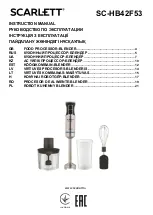
75
The following spectrograph displays the performance of the 10kHz NRSC
-compliant low
pass filter:
[Tilt EQ] (Tilt Equalization)
[Tilt
Freq] (Tilt Frequency)
Low frequency tilt and equalization controls have been provided after the Omnia ONE AM’s clipper section in
order to compensate for certain design deficiencies in older transmitters. Particularly in plate modulated AM
transmitters, interstage audio coupling transformers, interstage coupling capacitors, the modulation transformer
and reactor, and the type of coupling between them, all contribute to low frequency tilt performance. Since
transmitter-induced low frequency tilt appears as overshoot on the station’s modulation monitor, minimizing it
will improve station loudness. In order to perform the Tilt Compensation alignment procedure, a sine wave
audio oscillator and an oscilloscope are required.
Note:
The Omnia ONE’s output level must be reduced before starting this procedure. Raise it only after
instructed to do so in order to produce no more than 50% to 75% modulation. Failure to follow this advice may
overstress or even damage older transmitters. Omnia assumes no responsibility for such damage.
Tilt Adjustment Procedure
Since the purpose of Low Frequency Tilt Equalization of an AM transmitter is to optimize its performance on
low frequency, clipped audio waveforms, proper adjustment of the Tilt Equalizer is mandatory if optimum
modulation performance (maximum loudness) is the goal. Overcompensation, by using too much tilt
equalization, is actually worse than no tilt equalization at all because it further taxes the transmitter’s modulator
and power supply. In fact, on some transmitters, it may be preferable to not completely cancel low frequency tilt
because of power supply and modulator headroom issues. Only field experience with the subject transmitter (or
experimentation) will reveal whether or not low frequency tilt can, or sh
ould be applied to the transmitter. Note
also that by nature of its operation, Low Frequency Tilt Equalization puts additional demands on the transmitter
which are beyond that created by the Omnia’s competitive audio processing alone. In fact, the combination of
these two stresses, especially when applied to older, plate modulated transmitters, may cause damage.
The reader is therefore forewarned to use care, caution, and common sense when adjusting the Omnia’s Tilt
Equalizer when it is being used on older, less adequate transmitters!
















































